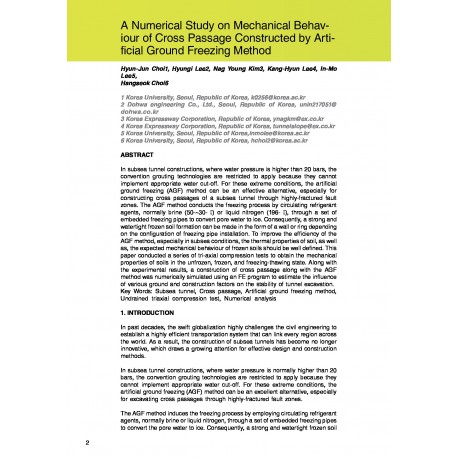Cart
0
0
No document
0,00 €
Total
Document successfully added to your shopping cart
Quantity
Total
There are 0 items in your cart.
There is 1 item in your cart.
Total documents
Total shipping
To be determined
Total
Search & filter
Search for a publication
Search & filter

A Numerical Study on Mechanical Behav iour of Cross Passage Constructed by Arti ficial Ground Freezing Method
3732_a_numerical_study_on_mechan
H. Choi / N. Y. Kim / K.-H. Lee / I.-M. Lee / H. Lee / H.-J. Choi
In subsea tunnel constructions, where water pressure is higher than 20 bars, the convention grouting technologies are restricted to apply because they cannot implement appropriate water cut-off. For these extreme conditions, the artificial ground freezing (AGF) method can be an effective alternative, especially for constructing cross passages of a subsea tunnel through highly-fractured fault zones. The AGF method conducts the freezing process by circulating refrigerant agents, normally brine (50-~30- ℃) or liquid nitrogen (196- ℃), through a set of embedded freezing pipes to convert pore water to ice. Consequently, a strong and watertight frozen soil formation can be made in the form of a wall or ring depending on the configuration of freezing pipe installation. To improve the efficiency of the AGF method, especially in subsea conditions, the thermal properties of soil, as well as, the expected mechanical behaviour of frozen soils should be well defined. This paper conducted a series of tri-axial compression tests to obtain the mechanical properties of soils in the unfrozen, frozen, and freezing-thawing state.


